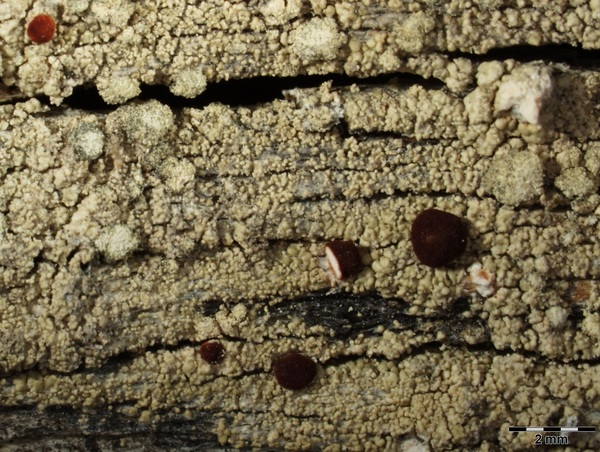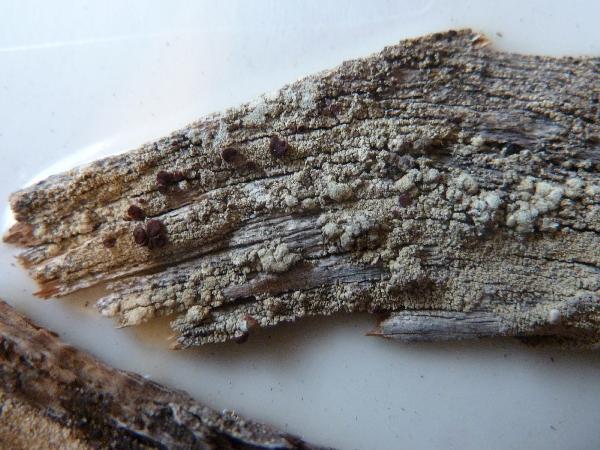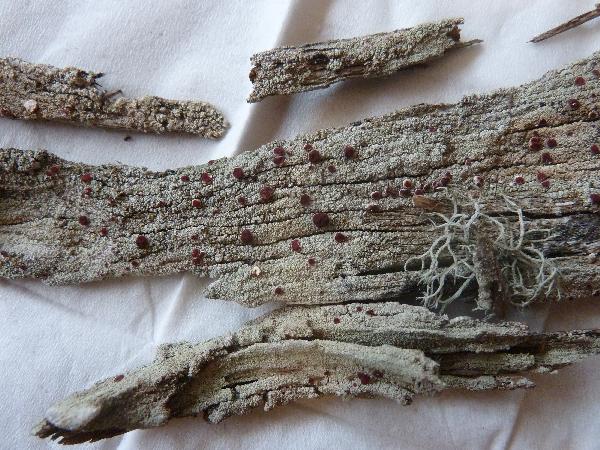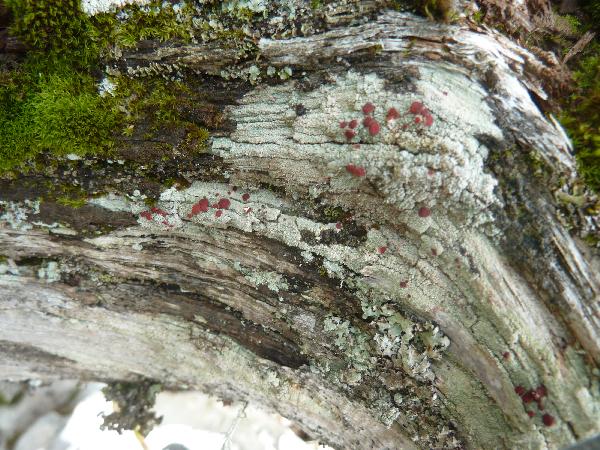Ophioparma aff. rubricosa (Müll. Arg.) S. Ekman
Opera Bot., 127: 133, 1996. Basionym: Patellaria rubricosa Müll. Arg. - Hedwigia, 34: 142, 1895.
Synonyms:
Distribution: C - Sar (Zedda & Sipman 2001).
Description: Thallus crustose, episubstratic, rimose to weakly rimose-areolate in the thickest parts, <2 mm thick, forming large, 4-7 cm wide patches, the surface covered in 0.1-0.2 mm wide isidia-like granules, with distinctly capitate soralia, or rarely with dispersed to crowded, convex, verrucose or rugose, 0.2-0.3 mm wide areoles, whitish grey to pale yellowish green, the granules paler than the non-granular parts. Apothecia common, round to irregular in outline, adnate, up to 0.8 mm across, with a scarlet-red to deep rusty red, flat to convex disc and a thin, finally often excluded thalline margin. Proper exciple c. 90 µm thick, with small crystals visible under polarized light; epithecium deep red, encrusted with crystals, K+ blue-violet; hymenium colourless to reddish in upper part, 40-50 µm high; hypothecium colourless, but appearing grey by the presence of small crystals. Asci 8-spored, clavate, with a shallow, uniformly K/I + blue apical dome, lacking a distinct ocular chamber or apical cushion, with spirally arranged spores, Ophioparma-type. Ascospores 3(-4)-septate, hyaline, narrowly fusiform, straight or curved, 25-38 x 3-3.5 µm. Pycnidia black, developing on or among the areoles, with a blue-black, wall reacting K-. Conidia simple, hyaline, bacilliform, 5-8 x 0.7-1 µm. Photobiont chlorococcoid. Spot tests: thallus K-, C-, KC+ pale yellow, P-. Chemistry: thallus with usnic, divaricatic and nordivaricatic acids, plus low concentrations of atranorin; apothecia with haemoventosin.Note: the record from Sardinia (samples collected on an old specimen of Juniperus oxycedrus), is the first and only one from Europe of this western North American epiphytic species. However, the Sardinian samples are sorediate and have a lower hymenium, and could belong to a still undescribed taxon. Work is in progress to clarify the status of the Sardinian populations.
Growth form: Crustose
Substrata: bark
Photobiont: green algae other than Trentepohlia
Reproductive strategy: mainly asexual, by soredia, or soredia-like structures (e.g. blastidia)
Commonnes-rarity: (info)
Alpine belt: absent
Subalpine belt: absent
Oromediterranean belt: absent
Montane belt: extremely rare
Submediterranean belt: absent
Padanian area: absent
Humid submediterranean belt: absent
Humid mediterranean belt: absent
Dry mediterranean belt: absent
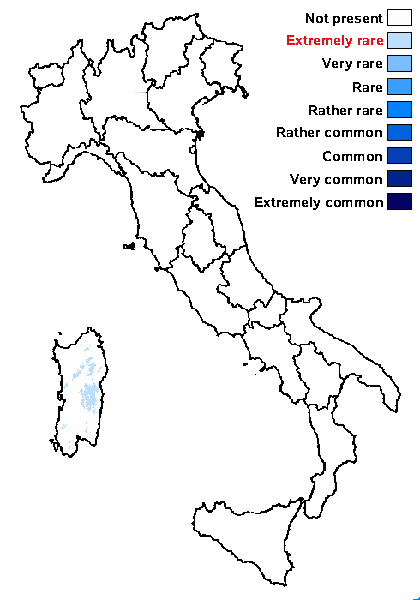
Predictive model
Growth form: Crustose
Substrata: bark
Photobiont: green algae other than Trentepohlia
Reproductive strategy: mainly asexual, by soredia, or soredia-like structures (e.g. blastidia)
Commonnes-rarity: (info)
Alpine belt: absent
Subalpine belt: absent
Oromediterranean belt: absent
Montane belt: extremely rare
Submediterranean belt: absent
Padanian area: absent
Humid submediterranean belt: absent
Humid mediterranean belt: absent
Dry mediterranean belt: absent

Predictive model
 INDEX FUNGORUM
INDEX FUNGORUM
 GBIF
GBIF

